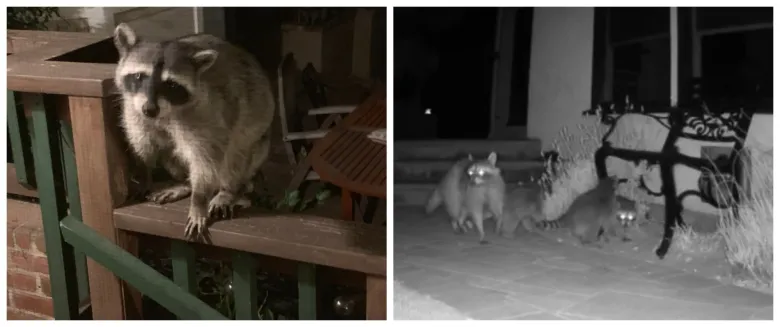Education, compassion: Goals for coexistence with wildlife

Pasadena Humane’s wildlife department’s “Humane Exclusion” program recently evicted a family of raccoons who had taken up residence under a house. A one-way door was installed, and a camera was set up to ensure that mom and all three young raccoons exited the house safely.
I’m going to jump on the journalistic bandwagon and talk about one of the most remarkable stories in the news this week. Trust me and keep reading, because this is not related to politics!
Just about every major news outlet has picked up this story that was first reported in the journal Current Biology. But, with all the other headlines, you may not have heard about an amazing discovery that has given me newfound respect for the mighty ant!
Scientists have learned that Florida carpenter ants are able to diagnose and treat injured limbs of their fellow ants. The wounded ants are stoically receptive to the treatment, which can include amputation of the injured leg.
This is the only known example in which animals (other than humans) will systematically amputate limbs of other members of their species to prevent death from the spread of infection.
What is even more fascinating is that the ants choose different treatments based on the location of the injury.
For femur injuries, a nestmate will clean the cut with their mouths and then chew off the entire leg. For tibia injuries, nestmates will only provide extensive cleaning of the wound – they will not amputate.
In both cases, injured ants have a much higher survival rate than they would without the help of their friends.
So why is the treatment different for the upper and lower leg? It seems to be related to the time it takes to amputate. It takes at least 40 minutes to chew off the leg (poor injured ant!).
With tibia injuries, infection spreads very quickly. The ants would not be able to amputate the leg in time to prevent deadly spread of infection.
Cleaning of the tibia is better than no intervention at all. However, the ants are innately smart enough to know that amputation, when time permits, is the most effective way to prevent death.
It seems ants have a lot to teach us about the power of teamwork and cooperation. Their medical system benefits all the ants, not just the injured ant.
You can imagine when a worker ant is incapacitated, it’s helpful to the other ants to assist their co-worker. The rehabilitated ant can continue to share the workload. Ants have six legs, so they can still function after the loss of a leg.
The wonders of the animal kingdom never cease to amaze me!
You may be wondering why the CEO of an animal shelter is writing about ants. I’m proud to work at Pasadena Humane where we are more than a shelter. We show compassion and care for all animals.
Since most species do not rehabilitate their own, we provide rehabilitation for sick, injured and orphaned wild animals (mostly birds and small mammals, rather than insects).
And, to promote our vision of peaceful coexistence with wildlife, Pasadena Humane offers “Humane Exclusion” services.
If you are experiencing an unpleasant wildlife issue at your home, such as raccoons in the attic or coyotes in the backyard, our wildlife experts can conduct thorough property inspections to help resolve conflicts without using lethal or illegal trapping methods.
We also provide abundant wildlife education through our online Wild Animal Resource Library, our wildlife helpline, and community seminars and events.
Do you know the beneficial role skunks play in our community? What is the best way to react if you encounter a black bear? Should you pick up baby birds if you see them on the ground?
To learn the answers to these questions and more about wildlife in our area, as well as Pasadena Humane’s wildlife services, visit pasadenahumane.org/services/wildlife
Dia DuVernet is president and CEO of Pasadena Humane.
This blog post originally appeared as a column in the Pasadena Star-News on July 5, 2024.


